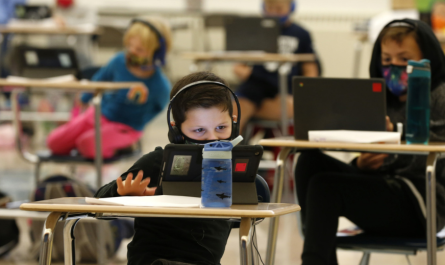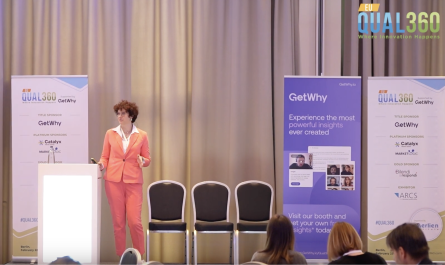Mobile qualitative research has become a go-to methodology for capturing respondents’ ‘in-the-moment’ reactions. For example, during DIY shopping missions, consumers record themselves shopping via their mobile phone cameras, which enables them to immediately document why they are drawn to specific products, rather than try to remember during an interview days later.
However, with the emergence of Gen Z—the first digital natives—the use of mobile qualitative research will likely shift. Gen Z has grown up with, and is highly comfortable using mobile platforms and apps; with ninety-eight percent of them owning a smartphone, and over half using them more than five hours per day. Therefore, researchers seeking insights from these consumers will increasingly have to meet them in these mobile spaces, even if the insights needed are not of the ‘in-the-moment’ variety.
A shift to purely mobile qualitative research, however, does not mean a researcher must sacrifice depth or richness. In fact, a completely mobile approach affords important benefits, as a recent project for one of our clients demonstrated.
C+R RESEARCH MOBILE QUALITATIVE CASE STUDY
Our client, a financial services provider, is looking to develop a deeper understanding of the motivations, expectations, and drivers behind Gen Z consumers who are first-time deposit account openers. For this project, we developed a five-day mobile-first community to dive deep into the participants’ feelings about money and finance, as well as their experiences opening and interacting with a deposit account.
Although the project asked for recollections rather than in-the-moment reactions, we chose an all-mobile qualitative methodology. Both asynchronous and live qualitative methods were deployed on a single mobile platform. Here are the benefits we noted:
BENEFIT #1: MOBILE-FIRST CAN PROVIDE SEAMLESS RECRUITMENT
In the study, all recruitment was done via the same mobile platform that housed the study itself. Respondents took a self-paced screener adapted for mobile use, and those accepted were funneled into the study without having to switch platforms or complete additional sign-in steps. This also resulted in no learning curves and minimal time helping respondents get up to speed on the technology platform.
The recruiting process was seamless and quick, but not at the expense of the quality of respondents accepted. Video verification is also part of our recruitment process, providing the ability to easily assess articulation and if respondents are a good fit for the study.
BENEFIT #2: MOBILE-FIRST MAKES IT EASIER TO INTERVIEW PAIRS
Because the Gen Z cohort currently includes those aged 14-17, over half of the study was comprised of parent/child pairs (parents are likely making the majority of their financial decisions on behalf of the youngest Gen Zers). The discussion included specific questions for each person combined within the same session.
The mobile platform not only enabled the pairs to complete the study wherever they were, but it allowed them to easily pass the mobile phone back and forth so each person could answer the questions specific to them.
BENEFIT #3: MOBILE-FIRST CAN CAPTURE RICH NON-VERBAL FEEDBACK
During the asynchronous portion of the study, participants were asked several questions about their experiences with money and banking. The way these questions were asked, from how many appeared on screen at one time to the format used for each question, was somewhat dictated by the platform to keep things mobile-friendly.
With a bit of creativity, these ‘constraints’ actually yielded rich insights from participants. For example, it is often difficult to capture long, text-based answers due to the difficulty of typing on a mobile phone. However, the alternative to texting is the easy ability to record yourself speaking.
In lieu of open-ended text-based questions, we asked for video responses. Not only were participants able to give deeper, more thoughtful answers, but the videos captured rich non-verbal feedback (such as facial expressions and tonal cues) that are missing in text-only responses. This non-verbal feedback allowed for a deeper understanding of the participants’ needs and emotions.
We were also able to schedule live interviews within the same platform. This allowed us to open a dialogue where we could delve into issues from a different angle with Gen Z and their parents. Since we are talking with them live via their mobile device, we can capture all their facial expressions and other body language – along with the priceless parent-kid interactions.
CONCLUSION
As Gen Z (and Generation Alpha behind them) comprises a larger share of the market, mobile qualitative research will continue to evolve beyond just capturing in-the-moment insights. Ensure you can entice these digital natives (and their parents!) to participate and obtain deep emotional insights by choosing a mobile platform with seamless recruitment, the ability to complete sessions whenever and wherever (including when interviewing pairs), and that facilitate the capture of context-rich video responses.
Hear more from C&R at the upcoming Qual360 virtual conference taking place June 16&17 2021. Speakers include representatives from Microsoft, Gap, l’Oreal, Warner Media, Google, Revolt and many more! Sign up to our Email alerts for news, updates and special offers!










 by
by 

